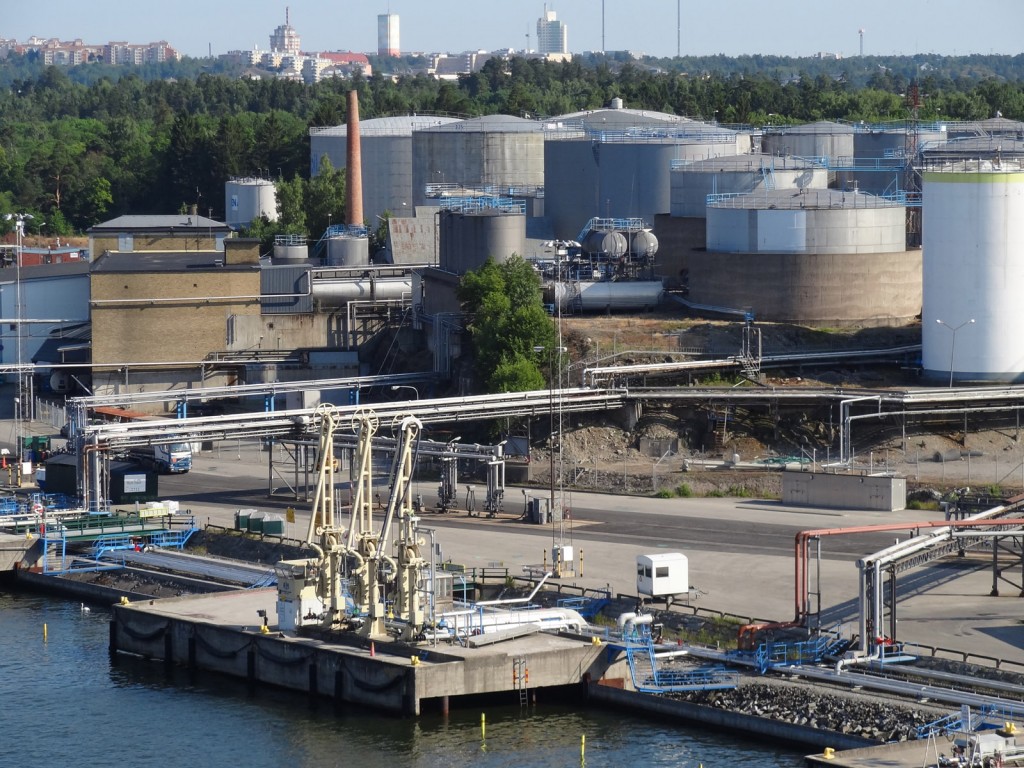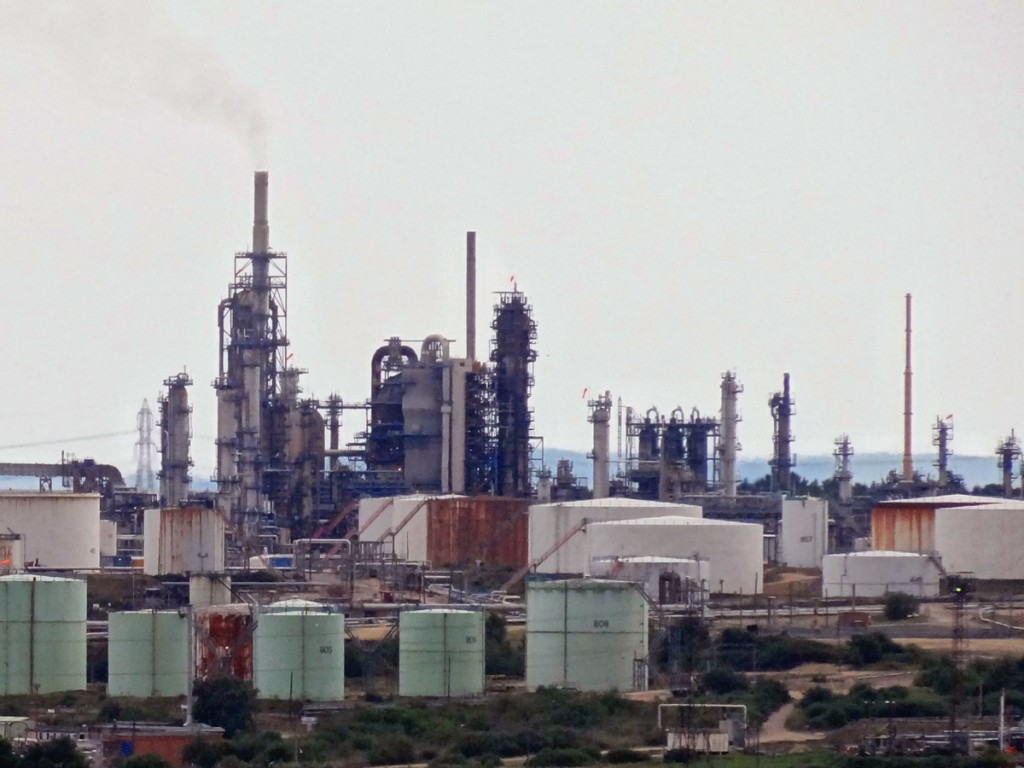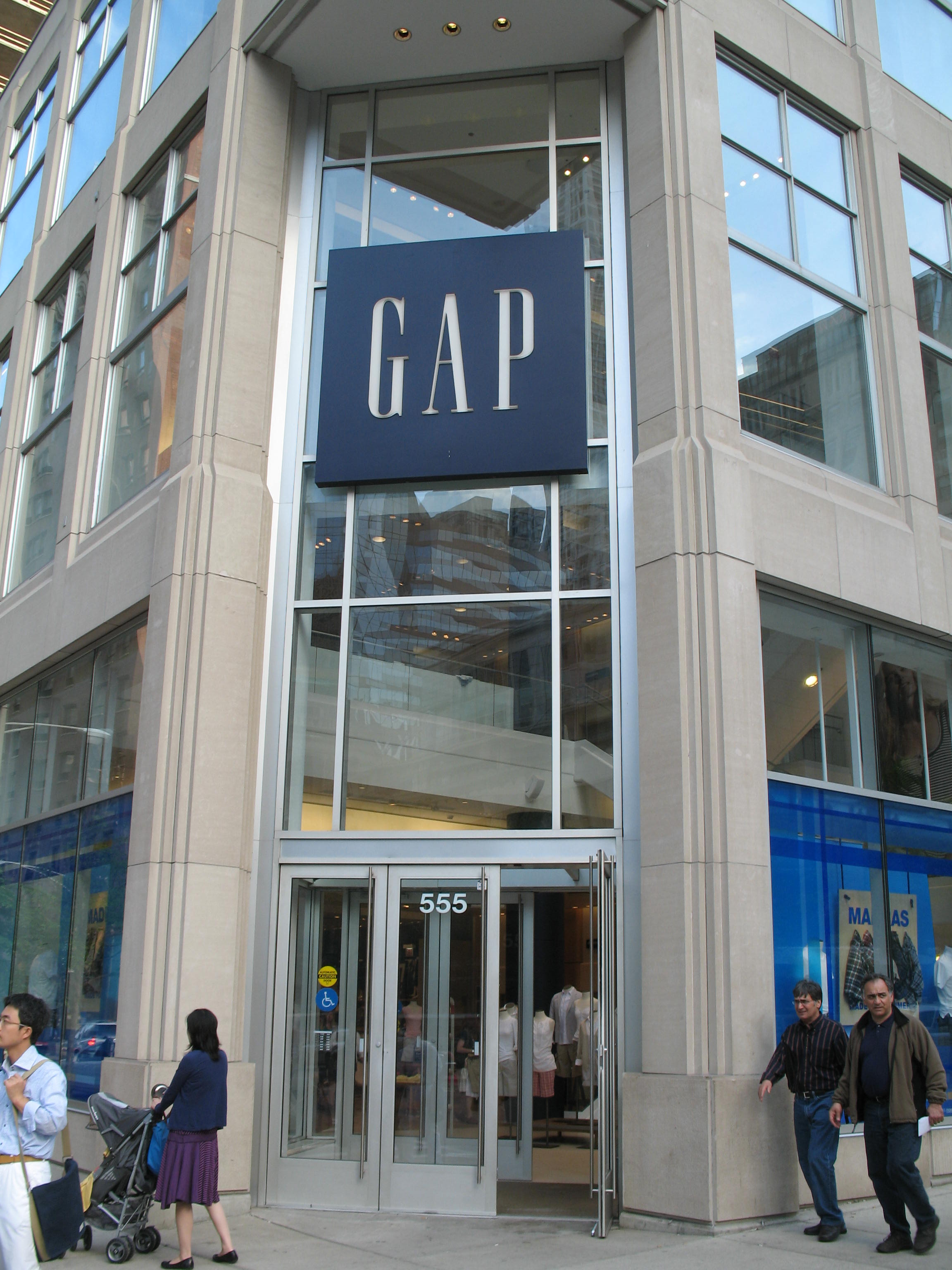 Some of the largest companies around the world operate in multiple locations. This allows them to take advantage of wider markets, cheaper transport and of course, lower taxes. In many cases, we see companies selling in one country, but locating their Headquarters in another, where tax rates are cheaper and hence their tax bills are lower. Much criticism has been levelled at such companies, who are accused of not paying their fair share in tax. There has been a crackdown on these companies and the UK is playing a leading role in this tightening of tax laws. Google is the latest company to face a large payment in backdated taxes.
Some of the largest companies around the world operate in multiple locations. This allows them to take advantage of wider markets, cheaper transport and of course, lower taxes. In many cases, we see companies selling in one country, but locating their Headquarters in another, where tax rates are cheaper and hence their tax bills are lower. Much criticism has been levelled at such companies, who are accused of not paying their fair share in tax. There has been a crackdown on these companies and the UK is playing a leading role in this tightening of tax laws. Google is the latest company to face a large payment in backdated taxes.
This is a company with a complex structure, which has involved Bermuda as a key location, with its zero rate of corporation tax and a Irish European base. Though locating its business in different countries is legal, it has now agreed to pay HMRC £130 million in back taxes from 2005, following a 6 year investigation. Google will also change its accounting system such that it pays more tax in Britain for sales in this country.
 Google may be the first in a line of companies making such changes to its accounting practices following a global drive to tackle the low levels of taxes paid by these large companies. This change in tax rules may bring welcome relief to government coffers, though criticisms remain about the ‘real’ figure that Google owes. As an example of this: in 2013, Google’s UK revenues were $5.6bn. Yet it only paid £20.5m in tax on its UK profits. The Head of Google Europe, Matt Brittin said:
Google may be the first in a line of companies making such changes to its accounting practices following a global drive to tackle the low levels of taxes paid by these large companies. This change in tax rules may bring welcome relief to government coffers, though criticisms remain about the ‘real’ figure that Google owes. As an example of this: in 2013, Google’s UK revenues were $5.6bn. Yet it only paid £20.5m in tax on its UK profits. The Head of Google Europe, Matt Brittin said:
“The rules are changing internationally and the UK government is taking the lead in applying those rules so we’ll be changing what we are doing here. We want to ensure that we pay the right amount of tax.”
Mr Brittin was clear in saying that these back dated taxes are not evidence that they had been paying too little tax in previous years. He confirmed that they were abiding by tax laws at the time and that tax laws are now changing and hence so will the amount of tax they pay. He continued:
“I think there was concern that international companies were paying only in respect of profits that they make and those were the rules and the pressure was to see us pay in respect of the sales we make to UK customers – and the same for other companies…So, we are making a change because we want to continue to comply with the rules and the rules are changing.”
As the push to tighten tax laws changes, with firms paying more tax on sales as well as profits, we may observe more companies changing their accounting structures. The OECD has taken a big step in simplifying international tax laws and the coming years will tell us just how big an impact this will have and whether companies such as Google will face tax bills in other European countries as well. The following articles consider this taxing matter.
Google agrees £130m UK tax deal with HMRC BBC News, Kamal Ahmed (23/01/16)
Google strikes £130m back tax deal Financial Times, John Gapper (22/01/16)
Google strikes deal with UK tax authority Wall Street Journal, Sam Schechner and Stephen Fidler (23/01/16)
Google agrees to pay HMRC £130m in back taxes The Guardian, Kevin Rawlinson (23/01/16)
Google tax labelled ‘derisory’ by Labour’s John McDonnell BBC News (23/01/16)
Google to pay £130 million UK back taxes, critics want more Reuters, Tom Bergin (23/01/16)
Google to pay UK £130m in back taxes The Telegraph (22/01/16)
Google says it will pay £130m in back taxes Independent, Adam Barnett (23/01/16)
Google ‘agrees’ to pay £130m in extra UK tax after outrage when it coughed up just £20m on UK sales of nearly £4bn Mail Online, Imogen Calderwood (22/01/16)
Google agrees to pay $185 million in UK tax settlement Bloomberg, Brian Womack (23/01/16)
Questions
- What is the difference between a tax on sales and a tax on profits?
- How can companies legally avoid tax? Do you think they have a moral duty to pay tax?
- If firms face higher rates of taxation, how will this affect their costs and profits?
- Why are the larger multinationals, such as Google more able to engage in tax avoidance schemes?
- Do you think the problem of tax avoidance is one of the negative consequences of globalisation?
- Is the criticism about the ‘low’ amount of taxes paid to HMRC justified?
- The OECD has taken a leading role in tightening international tax policy. Do you think this will negatively impact the competitiveness of the global market place?
- What are the costs and benefits to a country of having a low rate of corporation tax?
 The demand for oil is growing and yet the price of oil, at around $46 per barrel over the past few weeks, remains at less than half that of the period from 2011 to mid 2014. The reason is that supply has been much larger than demand. The result has been a large production surplus and a growth in oil stocks. Supply did fall somewhat in October, which reduced the surplus in 2015 Q3 below than of the record level in Q2 – but the surplus was still the second highest on record.
The demand for oil is growing and yet the price of oil, at around $46 per barrel over the past few weeks, remains at less than half that of the period from 2011 to mid 2014. The reason is that supply has been much larger than demand. The result has been a large production surplus and a growth in oil stocks. Supply did fall somewhat in October, which reduced the surplus in 2015 Q3 below than of the record level in Q2 – but the surplus was still the second highest on record.
What is more, the modest growth in demand is forecast to slow in 2016. Supply, however, is expected to decrease through the first three quarters of 2016, before rising again at the end of 2016. The result will be a modest rise in price into 2016, to around $56 per barrel, compared with an average of just over $54 per barrel so far for 2015 (click here for a PowerPoint of the chart below).
 But why does supply remain so high, given such low prices? As we saw in the post The oil industry and low oil prices, it is partly the result of increases in supply from large-scale investment in new sources of oil over the past few years, such as the fracking of shale deposits, and partly the increased output by OPEC designed to keep prices low and make new investment in shale oil unprofitable.
But why does supply remain so high, given such low prices? As we saw in the post The oil industry and low oil prices, it is partly the result of increases in supply from large-scale investment in new sources of oil over the past few years, such as the fracking of shale deposits, and partly the increased output by OPEC designed to keep prices low and make new investment in shale oil unprofitable.
So why then doesn’t supply drop off rapidly? As we saw in the post, A crude indicator of the economy (Part 2), even though shale oil producers in the USA need a price of around $70 or more to make investment in new sources profitable, the marginal cost of extracting oil from existing sources is only around $10 to £20 per barrel.  This means that shale oil production will continue until the end of the life of the wells. Given that wells typically have a life of at least three years, it could take some time for the low prices to have a significant effect on supply. According to the US Energy Information Administration’s forecasts, US crude oil production will drop next year by only just over 5%, from an average of 9.3 million barrels per day in 2015 to 8.8 million barrels per day in 2016.
This means that shale oil production will continue until the end of the life of the wells. Given that wells typically have a life of at least three years, it could take some time for the low prices to have a significant effect on supply. According to the US Energy Information Administration’s forecasts, US crude oil production will drop next year by only just over 5%, from an average of 9.3 million barrels per day in 2015 to 8.8 million barrels per day in 2016.
In the meantime, we can expect low oil prices to continue for some time. Whilst this is bad news for oil exporters, it is good news for oil importing countries, as the lower costs will help aid recovery.
Webcasts
 IEA says oil glut could worsen through 2016 Euronews (13/11/15)
IEA says oil glut could worsen through 2016 Euronews (13/11/15)
 IEA Says Record 3 Billion-Barrel Oil Stocks May Deepen Rout BloombergBusiness, Grant Smith (13/11/15)
IEA Says Record 3 Billion-Barrel Oil Stocks May Deepen Rout BloombergBusiness, Grant Smith (13/11/15)
Articles
IEA Offers No Hope For An Oil-Price Recovery Forbes, Art Berman (13/11/15)
Oil glut to swamp demand until 2020 Financial Times, Anjli Raval (10/11/15)
Record oil glut stands at 3bn barrels BBC News (13/11/15)
Global oil glut highest in a decade as inventories soar The Telegraph, Mehreen Khan (12/11/15)
The Oil Glut Was Created In Q1 2015; Q3 OECD Inventory Movements Are Actually Quite Normal Seeking Alpha (13/11/15)
Record oil glut stands at 3 billion barrels Arab News (14/11/15)
OPEC Update 2015: No End To Oil Glut, Low Prices, As Members Prepare For Tense Meeting International Business Times, Jess McHugh (12/11/15)
Surviving The Oil Glut Investing.com, Phil Flynn (11/11/15)
Reports and data
Oil Market Report International Energy Agency (IEA) (13/11/15)
Short-term Energy Outlook US Energy Information Administration (EIA) (10/11/15)
Brent Crude Prices US Energy Information Administration (EIA)
Questions
- Using demand and supply diagrams, demonstrate (a) what has been happening to oil prices in 2015 and (b) what is likely to happen to them in 2016.
- How are the price elasticities of demand and supply relevant in explaining the magnitude of oil price movements?
- What are oil prices likely to be in five years’ time?
- Using aggregate demand and supply analysis, demonstrate the effect of lower oil prices on a national economy.
- Why might the downward effect on inflation from lower oil prices act as a stimulus to the economy? Is this consistent with deflation being seen as requiring a stimulus from central banks, such as lower interest rates or quantitative easing?
- Do you agree with the statement that “Saudi Arabia is acting directly against the interests of half the cartel and is running OPEC over a cliff”?
- If the oil price is around $70 per barrel in a couple of years’ time, would it be worth oil companies investing in shale oil wells at that point? Explain why or why not.
- Distinguish between short-run and long-run shut down points. Why is the short-run shut down price likely to be lower than the long-run one?
 Oil prices will remain below $60 per barrel for the foreseeable future. At least this is what is being assumed by most oil producing companies. In the more distant future, prices may rise as investment in fracking, tar sands and new wells dries up. In meantime, however, marginal costs are sufficiently low as to make it economically viable to continue extracting oil from most sources at current prices.
Oil prices will remain below $60 per barrel for the foreseeable future. At least this is what is being assumed by most oil producing companies. In the more distant future, prices may rise as investment in fracking, tar sands and new wells dries up. In meantime, however, marginal costs are sufficiently low as to make it economically viable to continue extracting oil from most sources at current prices.
The low prices are partly the result of increases in supply from large-scale investment in new sources of oil over the past few years and increased output by OPEC. They are also partly the result of falling demand from China.
 But are low prices all bad news for the oil industry? It depends on the sector of the industry. Extraction and exploration may be having a hard time; but downstream, the refining, petrochemicals, distribution and retail sectors are benefiting from the lower costs of crude oil. For the big integrated oil companies, such as BP, the overall effect may not be as detrimental as the profits from oil production suggest.
But are low prices all bad news for the oil industry? It depends on the sector of the industry. Extraction and exploration may be having a hard time; but downstream, the refining, petrochemicals, distribution and retail sectors are benefiting from the lower costs of crude oil. For the big integrated oil companies, such as BP, the overall effect may not be as detrimental as the profits from oil production suggest.
Articles
BP – low oil price isn’t all bad new BBC News, Kamal Ahmed (27/10/15)
Want to See Who’s Happy About Low Oil Prices? Look at Refiners Bloomberg, Dan Murtaugh (31/10/15)
Low prices are crushing Canada’s oil sands industry. Shell’s the latest casualty. Vox, Brad Plumer (28/10/15)
Data
Brent spot crude oil prices US Energy Information Administration
BP Quarterly results and webcast BP
Questions
- Why have oil prices fallen?
- What is likely to happen to the supply of oil (a) over the next three years; (b) in the longer term?
- Draw a diagram with average and marginal costs and revenue to show why it may be profitable to continue producing oil in the short run at $50 per barrel. Why may it not be profitable to invest in new sources of supply if the price remains at current levels?
- Find out in what downstream sectors BP is involved and what has happened to its profits in these sectors.
- Draw a diagram with average and marginal costs and revenue to show why profits may be increasing from the wholesaling of petrol and diesel to filling stations.
- How is price elasticity of demand relevant to the profitablity of downstream sectors in the context of falling costs?
 German Engineering has dominated for decades and is seen as the pinnacle of quality and the key to manufacturing long-lasting products. But are long-lasting products a good strategy for a company? If products break quickly, customers need to replace them and this encourages more spending. But does this encourage customers to switch to other suppliers? Instead, do high quality products that don’t require replacement but demand a higher price offset this lack of repeat custom?
German Engineering has dominated for decades and is seen as the pinnacle of quality and the key to manufacturing long-lasting products. But are long-lasting products a good strategy for a company? If products break quickly, customers need to replace them and this encourages more spending. But does this encourage customers to switch to other suppliers? Instead, do high quality products that don’t require replacement but demand a higher price offset this lack of repeat custom?
Markus Miele is the Chief Executive of Miele, the German domestic appliance manufacturer and he takes a personal interest in his products and customers. Typical appliances from Miele can cost up to twice as much as similar appliances from other companies and yet this company is going from strength to strength. Rather than selling products that need frequent replacements, Miele is proud of its strategy to retain customers by selling products at a very high price, knowing that they will last for years. Customers appear equally willing to pay this high price for big consumer durables and their long-lasting nature is clearly encouraging its customers to buy other products too. This strategy has been so successful that other big companies are now targeting these customers. Anthony Williams, from GfK said:
“Evidence suggests manufacturers are putting in money to ensure good build quality…There are so many standards that now have to be adhered to, particularly for hi-tech products, by the nature of the product they have to make sure the [manufacturing] environment is very carefully monitored.”
The following article from BBC News considers the market for domestic appliances and the role of durability.
Can you charge double and still keep your customers coming back? BBC News, Lucy Hooker (2/10/15)
Questions
- How important is the concept of price elasticity of demand in determining a company’s strategy?
- If other firms are targeting a similar strategy to that of Miele, what might this mean for prices?
- How does the brand ‘made in Germany’ affect the demand for a product? Is there imperfect information here?
- With increase competition, companies such as Miele may be pressured into moving into cheaper production markets. How would this affect the company?
- Will the recent scandal at VW have a negative impact on companies such as Miele who rely on the ‘brand Germany’?
 The Gap has been a fixture of UK High Streets for many years and has had both ups and downs. In a highly competitive market, it faces fierce rivals from other high street retailers and also from an increasingly important online presence. Same-shop sales for Gap fell in July by 7% and the brand is now finding itself in a tricky position.
The Gap has been a fixture of UK High Streets for many years and has had both ups and downs. In a highly competitive market, it faces fierce rivals from other high street retailers and also from an increasingly important online presence. Same-shop sales for Gap fell in July by 7% and the brand is now finding itself in a tricky position.
Although the Gap does sell products at a variety of prices, even sales growth in its most affordable line was not sufficient to offset declines elsewhere. It’s not just the UK where this decline is observed, with 175 Gap specialty shops in America being shut down over the next year. This will inevitably mean job losses. So why is Gap struggling so much, after being such a popular brand?
Its competitors are arguably offering a very similar product, but at a lower price. Consumers, being increasingly aware of prices and having many more options to make price comparisons, are perhaps using this information to make better choices. If they don’t believe that they are getting something extra from paying a slightly higher price at Gap, then they’d prefer to get the same thing elsewhere, from somewhere like Forever 21 or H&M. Some also suggest that the product itself is out of date and with the world of high fashion being such an important part of life for many people, an out-of-date product is bad news. That, together with consumers finding more and more things that they can spend their money on, beyond clothes has led to a tricky position for the Gap.
A key part of maintaining a presence on high streets has been sales and special offers – this has been a key element in keeping customers coming, but it is certainly not a long term strategy. Research analysts have been investigating some of the key aspects of the Gap and various comments have been made, including:
“Uniformity is no longer cool… The trick now is convincing your customer that they’re getting something unique.” (Simeon Siegel), Nomura Securities.
“Of top priority is delivering more consistent and compelling product collections.” Kari Shellhorn, Gap spokeswomen.
“Whether it’s colour or print or it’s pattern, the Gap brand hasn’t been kept up to date … Until they have their product right, I think we’ll continue to see them have promotions.” Dana Telsey, Telsey Advisory Group.
The future of Gap is certainly in the balance and with an increasingly competitive market when it comes to retail, an effective strategy to maintain and increase its market share will be essential.
Why Gap is in a tight squeeze BBC News, Gianna Palmer (20/8/15)
Gap Inc sees some potential for next year but Q2 2015 remains weak Forbes, Investing, Trefis Team (24/8/15)
Questions
- What sort of figure would you expect Gap’s clothes to have and why?
- Into which market structure would you place the retail industry? What does this tell us about how a company such as Gap can hope to make profits?
- If you were advising Gap, what strategies would you propose as a means of boosting revenue and cutting costs?
- The BBC News article states that the fortunes of Gap have been hurt by a strong US dollar. Why may this be the case?
Some of the largest companies around the world operate in multiple locations. This allows them to take advantage of wider markets, cheaper transport and of course, lower taxes. In many cases, we see companies selling in one country, but locating their Headquarters in another, where tax rates are cheaper and hence their tax bills are lower. Much criticism has been levelled at such companies, who are accused of not paying their fair share in tax. There has been a crackdown on these companies and the UK is playing a leading role in this tightening of tax laws. Google is the latest company to face a large payment in backdated taxes.
 Google may be the first in a line of companies making such changes to its accounting practices following a global drive to tackle the low levels of taxes paid by these large companies. This change in tax rules may bring welcome relief to government coffers, though criticisms remain about the ‘real’ figure that Google owes. As an example of this: in 2013, Google’s UK revenues were $5.6bn. Yet it only paid £20.5m in tax on its UK profits. The Head of Google Europe, Matt Brittin said:
Google may be the first in a line of companies making such changes to its accounting practices following a global drive to tackle the low levels of taxes paid by these large companies. This change in tax rules may bring welcome relief to government coffers, though criticisms remain about the ‘real’ figure that Google owes. As an example of this: in 2013, Google’s UK revenues were $5.6bn. Yet it only paid £20.5m in tax on its UK profits. The Head of Google Europe, Matt Brittin said:





